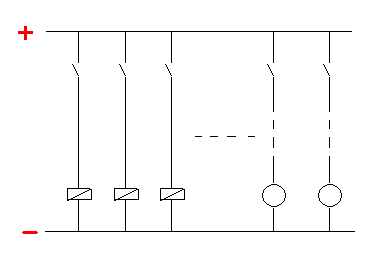- This topic has 3 replies, 1 voice, and was last updated 2 years, 11 months ago by .
-
Topic
-
Control and protection electrical circuits are one of the important portions of electrical systems designed and shown by standard symbols.
Usually the circuit is supplied by positive and negative polarity of one battery. In almost electrical circuit diagram sheets we can see a positive line of DC polarity in top of sheet and negative line in bottom of sheet that is purposed to supply electrical equipment of circuit.

How can you explain that polarity arrangement? Why the negative polarity is usually located in bottom and positive polarity in top of sheets?
Is it habit activity in drawing circuits or not? If all used electrical equipments, for example auxiliary relays, open and close coil of power circuit breakers and so on could be activated by inverse polarity, would we change that mentioned norm, and use negative in top of sheets and positive polarity in bottom, without any circuit configuration changing?
Viewing 3 replies - 1 through 3 (of 3 total)
Viewing 3 replies - 1 through 3 (of 3 total)
- You must be logged in to reply to this topic.
